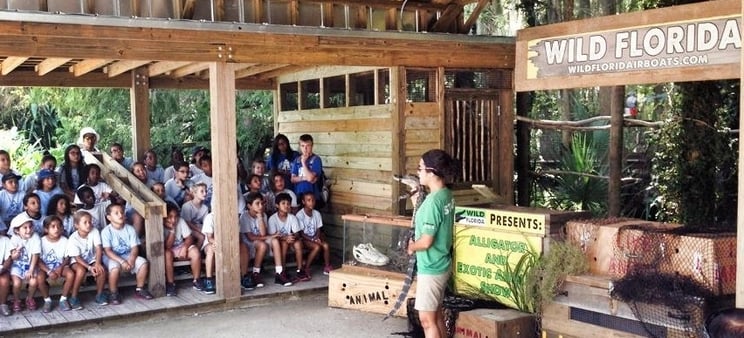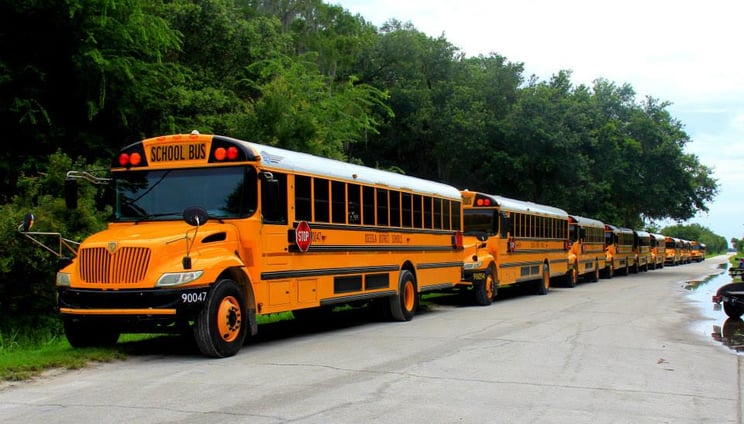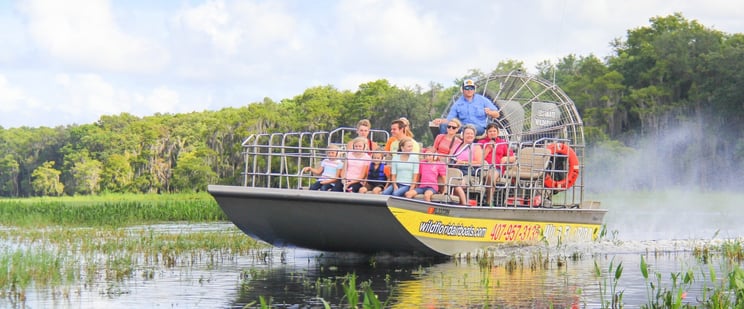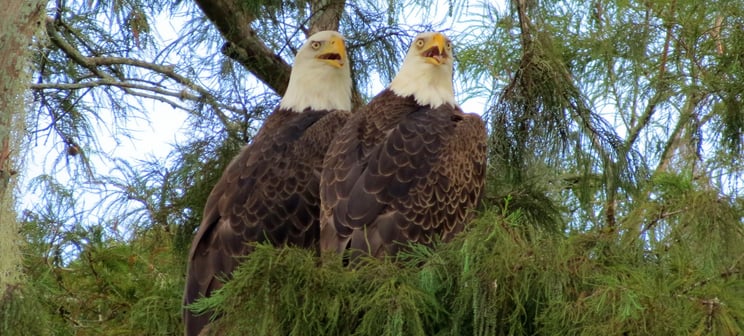When you're researching attractions for field trips for your class, what things are you looking for? Something outdoors? Something unique and out-of-the-box with hands-on activities? Something that helps reinforce what they might be learning in class? These are all very important factors to consider, but can be hard to find all in one place. The great thing is, at Wild Florida, your students can experience all these things and more with a hands-on day of learning and adventure, and maybe even an airboat ride!

In this blog, we'll go over 15 facts your students will be able to learn on an airboat ride in Florida, making it easy for you to prove to your administrators or anyone else who may be asking, "How does this field trip tie into what you've been teaching?"
1. The tall sawgrass found in the Everglades is more than just overgrown grass. If you look closely, you'll notice there are tiny ridges along the length of its blades. These ridges are so sharp that they can cut you (and your clothes) if you aren't careful!
2. Even from a state of rest, alligators can jump up to six feet into the air. An alligator’s jump isn’t just limited to jumping out of the water. They’ve been known to jump so they can get up to a tree branch faster and then climb to their prey.
3. The Everglades is the only place in the world where alligators and crocodiles can and do co-exist. Alligators are known to only live in fresh water; however, crocodiles can live in both fresh and salt water. The fresh water in the Florida Bay meets the salt water of the Gulf of Mexico in the Everglades, which makes an environment perfect for both of them!

4. There are more than 350 species of wildlife that live in the Everglades. While the craziest thing you might've found in your backyard was a big lizard (or your dog after he played in the mud), the Everglades is home to more than 350 species of wildlife, with 67 of them being endangered species.
5. 1 out of 3 Floridians rely on the Everglades as a source of water. As we mentioned before, the Everglades is a slow-flowing river that covers just over 2 million acres of southern Florida. And through storage, treatment, and conveyance each year, the Everglades provides fresh, clean drinking water to about 8 million Floridians.
6. The Everglades is really a slow-moving river. The Everglades is often described as a swamp or forested wetland, which is why most people never believe it when they find out it's actually a river. The Everglades gets its name "river of grass" because its fresh water rolls slowly over the lowlands and through blades of sawgrass.

7. The American alligator has one of the most powerful bites among all species in the United States. The bite strength of alligators far exceeds the power of bites produced by humans and most other animals. To put things in perspective, the bite of an alligator produces 16,460 newtons of bite pressure at a time, compared to humans who produce 890 newtons of bite force – and that’s only when they’re biting into meat!
8. Florida has the second largest population of bald eagles in the lower 48 states. Yup, you heard that right... Over 1,100 breeding pairs of bald eagles call Florida home. It’s not every day you see an endangered species in its natural habitat, but it’s even cooler when you get to see the United States’ national bird in its natural habitat!
9. The Florida swamps and wetlands provide the perfect breeding ground for the non-native species to thrive. Non-native species are animals living outside captivity that did not historically occur in Florida. While there are species that aren't harmful to the Everglades ecosystem, there are animals like the Burmese python and Cuban tree frog that are considered invasive because of their population has dominated the area, or they negatively impact other native species and resources.
10. Alligators are opportunistic hunters. Typically, an alligator's diet consists of fish, muskrat, deer, and... Other gators. Despite what you might hear, alligators are more afraid of humans than you are of them. You can see for yourself on your airboat tour in Florida when your airboat captain will advise you to keep still and quiet when you spot one hiding out on the swamp – because they’ll swim away if they get scared.

11. On average, male american alligators can grow to be 11.2 feet and females average around 8.2 feet. Despite what you might've seen in movies like Lake Placid (which was actually a crocodile), American alligators don't get quite that big. However, like humans, some alligators are born special. For example, according to the Florida Fish and Wildlife Conservation Committe, the Florida state record for the largest alligator caught was 14 feet and 3.5 inches!
12. Alligators and other reptiles' offspring's sex is determined by the temperature at which their eggs incubate. For most animals, the sex of offspring is determined by sex chromosomes at the time of conception. However, alligators and other reptiles such as crocodiles, turtles, and lizards don't have sex chromosomes, meaning, the sex of their young is determined by the temperature at which their eggs incubate.
-862261-edited.jpg?width=744&name=DSC_6517%20(1)-862261-edited.jpg)
13. The Great Blue Heron is one of Florida's most commonly seen large birds. These birds are comfortable around humans and are often seen begging humans for food (or stealing it from other animals you might be trying to feed!). You can distinguish them from other common Florida birds by their blue-gray color, large yellow bill, and black stripes above their eyes.
14. Raccoons are one of Florida's most common urban animals. Easily distinguished by their black rings and black facial "mask", people can often find raccoons out in the woods... Or digging through their trash cans in the neighborhood.
15. There is an estimated 5 million American alligators spread out across the southeastern U.S., but about 1.25 million live in Florida alone. Because of Florida's year-round (except for maybe December and January) warm temperatures, number of lakes, and variety of food, the Sunshine State is one the most hospitable environments for alligators to live in.
Ready to take your class Wild Florida? Click the link below to start planning your field trip! If you have more questions about airboat rides in Florida, check out our blog on some of our most frequently asked questions! Or download our Teachers Survival Guide to make sure you have all your t's crossed and i's dotted for your trip out to the Middle of Nowhere.




